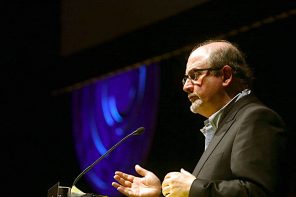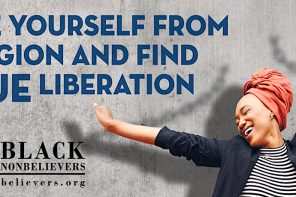During last month’s inauguration, President Obama included nonbelief in the litany of religious perspectives that must be recognized and respected. This sign of inclusion sparked a range of responses, with a good number of “nonbelievers” expressing appreciation for the president’s openness to a philosophy of life often viewed with suspicion.
On the surface, his remark was a welcome counter to popular imagination and a long overdue effort to remap the religious landscape of the United States. However well-intended the inclusion, of course, it succeeded in raising more questions than it answered: What is the real look of this inclusion? What are substantive signs of it? If all these various traditions are given equal footing in the public arena, in spite of their profound differences, what exactly is religion? If there is no clear distinction between the “sacred” and the “secular,” how does one define religion? How does one recognize and respond to “religiously”-motivated opinions and practices?
These are important but frustrating questions when one keeps in mind, for example, that the president’s words were uttered in the context of a theistic inauguration framed by prayer to the Christian God. The effort to speak to those who do not embrace theistic claims and orientations is appreciated, but it is muffled by Christian vocabulary and grammar that serves to uncritically and awkwardly outline this tolerance.
Overcoming this dilemma must involve more than making certain to better equip more religious communities for service. That is, a reconceived Office of Faith-Based and Neighborhood Partnerships is not enough. What I am suggesting here is too big a job for the faith-based program—too important for the occasional breakfast meeting or quick informational session.
A more inclusive approach to determining which religious (or nonreligious) organizations receive money, and the requirements associated with the spending of that money, is a push beyond what we encountered in the Bush Administration. And it is encouraging for President Obama to say that the mission of this Faith-Based and Neighborhood Partnership Office “will not be to favor one religious group over another—or even religious groups over secular groups. It will simply be to work on behalf of those organizations that want to work on behalf of our communities, and to do so without blurring the line our founders wisely drew between church and state.”
But the more difficult task involves development of the national posture necessary for achieving this vision. The problem is obvious; religious traditions involve competing faith claims, conflicting postures toward the practice of faith, and shifting assumptions concerning the public nature of religious commitment. Rich, “thick,” and complex discourse requires new structures, new rules of engagement—a push beyond what marks the current and public framing of religious concerns and practices. Great care must be exercised, or what we will get is superficial “tolerance” of religious humanists and secularists, a sense of what it means to be religious in the United States that barely hides an assumed theistic, if not Christian, backstory.
President Obama’s call for recognition of religious diversity falls short, in that little thus far suggests a rethinking of how we in the United States define, arrange, and shape our fundamental concerns. There will be no questioning of our general assumptions concerning what is meant when the United States is referred to as a religious nation.
There is an opportunity here that should not be missed. Rather than simply assuming a clear understanding of what it means to be “American” and “religious,” here is a chance to interrogate the wide range of possibilities. This involves sustained examination of what it means (and what must be surrendered) to embrace all modalities of religion within the context of this democracy. The signs of a morally and ethically centered and successful nation might need some rethinking in light of the various (and at times competing) norms held dear and celebrated within the context of our religious diversity.
President Obama will need a task force working over the course of four years, and charged with helping his administration think about the nature and meaning of our nation’s religious diversity. This group of scholars and leaders (both theistic and nontheistic) would be charged with developing a framework for addressing the intersections of religion and public life by helping the president first determine what makes up “religious America,” and defining a language and posture for engagement in public conversation concerning religion. By extension, the work of this task force would provide invaluable insight into the religious dimensions of our foreign policy challenges. If nothing else, it will offer President Obama and his administration more nuanced ways of thinking and speaking about and acting in light of religious inclusiveness.




